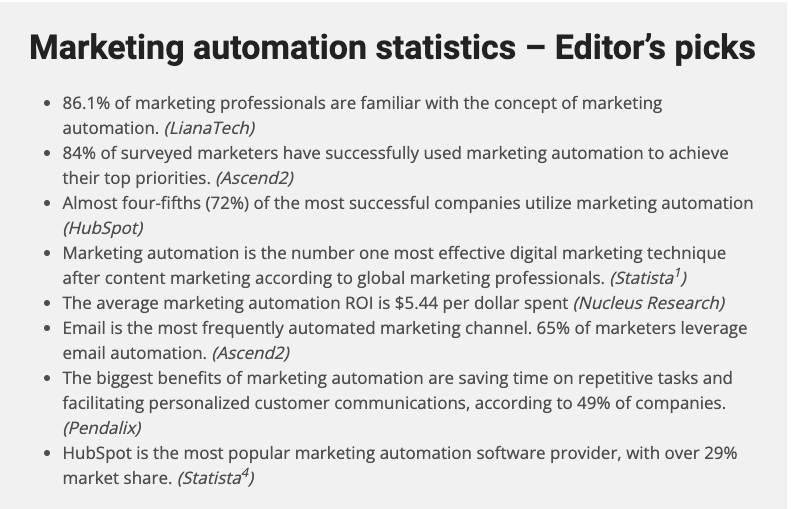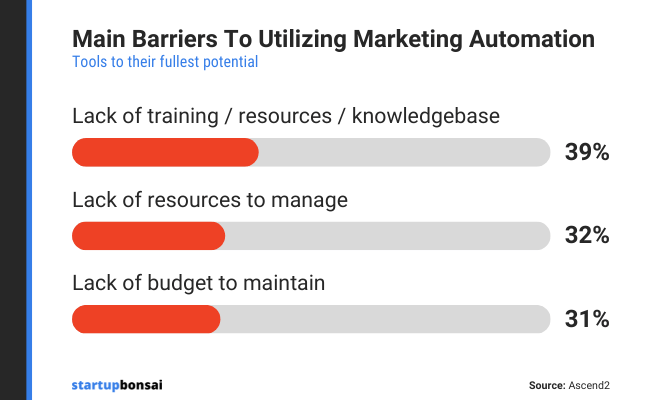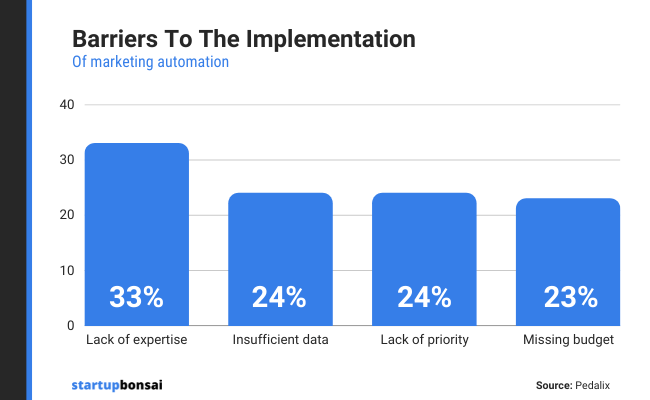Understanding Content Marketing Strategy
Content marketing involves creating and distributing valuable and relevant content with the intention of attracting, engaging, and retaining a target audience. A successful content marketing strategy entails carefully crafted planning, development, execution, and analysis of content. By leveraging AI in SEO and manual editing, businesses can create powerful content that delivers value to their customers.
To begin building a robust content marketing strategy for 2023, start by conducting market research to determine your target audience’s needs and pain points. Then identify relevant topics that align with your business objectives to create compelling content. Additionally, leverage AI tools such as natural language processing to optimize your content for search engines while manually editing it to ensure accuracy and readability.
As you continue with the development and execution of your strategy, ensure that you monitor its performance regularly against predetermined metrics such as website traffic or engagement rates. Learn from your results and insights progressively to make informed decisions using data-driven approaches aimed at improving the effectiveness of the campaign.
Pro Tip: Keep up with emerging trends in the digital space by actively networking with industry leaders through blogs, social media platforms or conferences, while exploring opportunities for collaboration from like-minded professionals in the field.
Only three things matter in a content marketing strategy for 2024: AI, SEO, and a trusty pair of human eyes to make those crucial manual edits.
Key Components of Content Marketing Strategy in 2024
To build a powerful content marketing strategy in 2024 with key components, such as AI, SEO, and manual edits required. In this section, we will be discussing AI in Content Marketing Strategy, SEO in Content Marketing Strategy, and Manual Edits Required in Content Marketing Strategy as effective solutions. Each sub-section will provide you with essential insights and tips to create a successful content marketing plan.
AI in Content Marketing Strategy
The Role of Artificial Intelligence in Boosting Your Content Marketing Strategy
Automation with AI can provide significant benefits to content marketing. Here are some ways AI can enhance your strategy:
| Benefits of AI |
Examples |
| Personalization |
Sending tailored communication emails based on individual preferences. |
| Content Creation |
Generating automated reports and creating marketing copies without human intervention. |
| Data Analysis and Insights |
Providing an in-depth analysis of data, customer behaviour and identifying market opportunities for your brand. |
Implementing AI techniques helps create a seamless experience for the audience. Additionally, the use of chatbots, machine learning algorithms and natural language processing (NLP) enable brands to analyze data at scale.
New Trends in AI Implementation
AI will continue to evolve at a fast pace combining various trends like predictive analytics and chatbots that augment user interactions. Also, companies are increasingly incorporating emotions into branding through AI-powered chatbots—enabling more personalized service.
 Get Ahead of the Competition
Get Ahead of the Competition
As businesses become more tech-savvy, it’s critical to implement powerful tools that give them an edge over their competitors. Don’t let fear hold you back from staying ahead in trends. Start implementing smart automation techniques today.
Start Leveraging the Power of AI to Optimize Your Marketing Efforts!
SEO is like a blind date, you want to make a great first impression with your content but also make sure it’s easy to find on Google.
SEO in Content Marketing Strategy
Optimizing search engine results is a crucial aspect of any successful content marketing endeavor. Incorporating strategic SEO techniques can enhance the visibility and ranking of your content on search engines, thereby boosting the traffic to your website. Relevant long-tail keywords and meta description optimization are some effective methods to improve SEO in content marketing.
Additionally, creating high-quality content that provides value to the audience is necessary for improving SEO. Valuable and engaging content can lead to improved engagement metrics such as click-through rate, dwell time, bounce rate, and social shares which ultimately leads to higher rankings. Moreover, incorporating multimedia such as videos or infographics into your content can also drive organic traffic and increase engagement.
Pro Tip: Conduct thorough keyword research to identify long-tail keywords that have low competition but high search volume potential. Use these keywords strategically by incorporating them in the title tags, header tags, meta descriptions, and throughout the body of your content.
Looks like AI still can’t replace the human touch when it comes to content marketing strategy – better make sure those manual edits are on point!
Manual Edits Required in Content Marketing Strategy
Content Marketing Optimization Through Semantic NLP Techniques
Content Marketing requires strategic planning and execution to achieve good results. In order to do so, manual edits are required in content marketing strategy using Semantic NLP techniques. The key components of a successful content marketing strategy include targeted audience, SEO optimization, engaging content, and distribution channels.
Furthermore, a strong understanding of the target audience is important for developing impactful content that resonates with them. Keyword research should be conducted to identify relevant keywords and phrases to optimize the content for search engines.

Another crucial aspect of Content Marketing is establishing the right distribution channels to reach potential customers through various platforms like social media, email marketing or blog posts. It is recommended to use multiple channels rather than focusing on only one.
In addition, too much automation may lead to poor quality content which lacks creativity and originality. Hence manual editing is required at various stages of creating content which can add value to your brand.
There are no set rules when it comes to Content Marketing but experimenting with new strategies can lead to great results. A case in point – ShareASale increased its website traffic by over 50% after updating its top-performing articles with the latest information.
Strategic manual editing in Content Marketing Strategy using Semantic NLP techniques coupled with a thorough understanding of targeted audience and effective distribution techniques can help businesses achieve their goals more efficiently.
Want to build a powerful content marketing strategy in 2023? Start by pretending your boss is your biggest critic and your mother-in-law is your target audience.
Building a Powerful Content Marketing Strategy in 2024
To build a powerful content marketing strategy in 2023, you need to follow a step-by-step plan with clear sub-sections. Start by identifying your target audience and creating buyer personas. Set your content marketing goals and research and develop content ideas using AI and SEO. Create a content calendar, edit and distribute your content on all relevant platforms, and measure and analyze your results manually to make the required edits.
Identify Your Target Audience and Create Buyer Personas
Identifying the Audience for Building Buyer Personas
One of the fundamental steps in creating a powerful content marketing strategy is understanding your target audience’s needs and desires. This knowledge will facilitate developing quality content that resonates with them, ensuring that they keep coming back to your site.
Here’s a 3-step guide on how to identify your target audience and create buyer personas:
- Gather Customer Data: Collect demographic and behavioral data on current customers and prospects to gain insights into their preferences.
- Identify Persona Patterns: Analyze the collected data to identify shared characteristics among customers (e.g., age group) to create specific persona groups.
- Create Customized Content: Tailor content for each persona group based on its identified requirements, making sure it speaks directly to them.
It’s important to understand that each buyer persona represents a different segment of desired audiences; therefore, customized messaging should be targeted towards meeting their specific needs.
Pro Tip: Continually reassessing data and adjusting these processes as necessary is critical to ensuring continued success in maintaining customer satisfaction through personalized messaging.
Choose your goals wisely, or you’ll end up producing more content than a struggling blogger on a caffeine binge.
Set Your Content Marketing Goals
Creating Achievable Content Marketing Targets
Without specific, measurable and time-bound goals, a content marketing strategy cannot achieve its purpose. Your targets must be realistic and attainable with an outcome that helps your business. To begin, determine what you want to accomplish through your efforts and how you will measure success.
For instance, instead of making general goals like “increase website traffic,” develop SMART targets such as raising organic search traffic by 50% or increasing social media followers by 30% within six months. By developing quantifiable objectives, defining benchmarks, analyzing metrics and evaluating outcomes in the longer term, businesses can improve their content marketing return on investment.
Developing Ideas for Targeted Content
Once you have defined your content marketing objectives, think about who your audience is and what they are looking for. Identify what problem your product or service solves and how it benefits customers. Building buyer personas may assist in narrowing down your audience’s needs and tastes.
Conduct keyword research to monitor trends in your niche and gain insight into the language potential customers employ when looking for solutions to their issue. Interviewing consumers or speaking with sales teams can provide useful insights into common pain points that content should address.
Producing targeted content such as blogs, videos or webinars that add value to consumers will increase brand awareness while establishing customer trust.
Don’t Get Left Behind
With the pandemic-driven internet boom accelerating digitization of businesses worldwide, new opportunities are emerging amidst stiff competition. Brands that create compelling content marketing campaigns could stay ahead of competitors.
So take action now to set realistic content marketing objectives that align with business goals and engage clients through valuable and informative material! Get your brainstorm on and let your imagination run wild, because the best content ideas come from the craziest places.
Research and Develop Content Ideas
To create a dynamic content marketing strategy, exploring innovative and unique ideas is essential. Begin your ideation process by conducting market research and analyzing the target audience’s interests and preferences.
Identify trending topics, frequently asked questions, and pain points to develop engaging content that resonates with the audience’s needs. If you need some inspiration, check out this list of 21 content ideas.
Once you have a clear understanding of your audience, brainstorm various content formats such as blogs, videos, podcasts, infographics, etc., to provide value to the users. Leverage social media insights and conduct competitor analysis to add a distinctive touch to your content creation efforts.
Creating a content calendar can simplify the planning process by providing structure and ensuring timely delivery of fresh content. Consider adding a mix of evergreen and trending topics in your schedule to boost engagement and website traffic.
A straightforward yet effective way of generating compelling ideas is through user-generated content (UGC). Encouraging customers to share their experiences or opinions on various digital platforms can help create authentic brand stories while humanizing the brand.
In summary, researching and producing unique themes for content creation is essential for customers’ interest in brands. With these innovative approaches mentioned above, businesses can build robust marketing strategies that drive engagement, increase retention rates & better ROI.
Why wait for inspiration when you can just schedule it in? Create a content calendar and watch as your ideas magically appear.
Create a Content Calendar
To ensure effective content marketing, it is crucial to devise a content schedule that adheres to a strategy. Doing so allows businesses to establish consistency and avoid becoming inactive or too reactive in their approach.
- List all the significant events and holidays throughout the year and use them as inspiration for your content.
- Create a calendar that outlines when each piece of content will be published, ensuring there is enough time between posts to maintain relevance.
- Ensure you have sufficient resources at your disposal to produce quality content across all platforms and on schedule.
It is also important to note that successful content marketing requires flexibility, as unforeseen circumstances may arise and disrupt the intended schedule. However, having a solid foundation in place ensures companies can pivot effectively without losing sight of their end goals.
Creating and implementing an effective content marketing strategy involves more than just a calendar; staying up-to-date with current trends to stay relevant in an increasingly digital world is another critical component.
A recent statistic shows that mobile users worldwide are expected to exceed 7 billion by 2023 (source: Statista).
By committing time, implementing best practices, leveraging trends and technologies while embracing changing consumer behavior patterns – effective digital marketing can provide real value for any business willing to invest in its growth.
Because let’s be real, content won’t promote itself – you gotta give it a helping hand.
Distribute and Promote Your Content
To maximize the reach of your content, you should strategically disseminate and publicize it using proven marketing techniques. Here are three effective ways to get your message in front of more eyes:
- Reach out to key influencers: By partnering with opinion leaders or prominent voices in your industry, you can leverage their audience to amplify your message.
- Maximize your use of social media: Share your content on different platforms and optimize it for maximum engagement through hashtags, visual content and scheduled posts.
- Utilize targeted advertising: Invest in paid promotion campaigns for specific platforms like Google AdWords or Facebook Ads that aim to expand the viewership of select content pieces.
To take your distribution efforts to the next level, try including metrics that track each technique’s performance, so you can optimize future campaigns. This is vital as it ensures that every aspect of your promotional efforts effectively drives traffic to its intended destination.
In our experience, one great way to instantly distribute valuable content is through newsletters and email marketing campaigns. With a well-crafted newsletter, you can inform existing customers or subscribers of upcoming product launches, new blog posts, or host exclusive discounts.
For example, when we deployed this tactic with a client’s product launch newsletter campaign last year which combined storytelling elements with personalized offers; the campaign achieved an open rate of over 35% momentously boosting their sales numbers making it a huge success.
Combining these tips with strong valuable content will ensure that more people see what you have to offer. Let data be the puppet master of your content marketing strategy; it’s time to measure and analyze or suffer the consequences.
Measure and Analyze Your Results
For a comprehensive content marketing strategy in 2023, it is imperative to gauge the results of your efforts. Understandably, our true success lies in analyzing viewership and output input ratios, which can be achieved by acknowledging certain factors.
The key metrics to measure are:
- Acquisition Metrics: Attracting and building a clientèle base
- Conversion Metrics: Mapping leads to conversions
- Engagement Metrics: Encouraging customer loyalty and increasing return customers
- Retention Metrics: Tracking customer satisfaction levels and reducing churn
For a proactive marketing approach, consider measuring your developed metrics regularly to identify any weaknesses or trends that may point towards the need for future adaptions.
In addition, it’s important not to forget to analyze segmented data such as demographic information and their propensity towards purchasing goods from product posts vs browsing through blogs.
Make sure you practice singular over shared measures, ensuring mutual understanding across all stakeholders without using jargon or incomprehensible acronyms.
When implementing your content marketing strategy this year, remember that successful initiatives don’t happen overnight. Measure success with patience by analyzing accurate data regularly.
Remember, a powerful content marketing strategy is like a muscle – you need to exercise it regularly to see results.
Conclusion: Summing Up the Key Takeaways.
The Key Takeaways from Building a Powerful Content Marketing Strategy in 2023:
- Creating an effective content marketing strategy requires a combination of manual edits and the use of AI technologies.
- Focusing on SEO is crucial but should not be the only consideration.
- Providing value to your audience through engaging content remains vital.
- To maximize the impact of your strategy, prioritize creating content that targets specific personas and metrics that matter for your business objectives.
- Leverage different formats such as videos, podcasts, and infographics to cater to various preferences.
- Lastly, stay updated with emerging trends and new technologies in the field of content creation and distribution. This will ensure your strategy continues to be relevant in meeting customer needs.
Pro Tip: Use data analytics tools to measure the effectiveness of your strategy and make necessary adjustments based on user behavior insights. There are a lot of great analytics tools out there. Sometimes you need to connect them together to get the KPIs you need. Tools like Domo can be a great help in this regard.
Frequently Asked Questions
1. What is content marketing and why is it important?
Content marketing involves creating and sharing valuable, relevant, and consistent content to attract and retain a clearly defined audience with the goal of driving profitable customer action. It is important because it helps increase brand awareness, establish authority in your industry, build relationships with your audience, and ultimately drive more sales.
2. How can AI be used in content marketing?
AI can be used in content marketing by helping to improve the effectiveness of your content. This can involve using AI to optimize headlines, image selection, and even to personalize content for individual users. It can also help with content analysis and provide insights into what is working and what needs improvement.
3. How important is SEO in content marketing?
SEO is crucial in content marketing as it helps your content get found by people who are looking for it. By optimizing your content for specific keywords and phrases, you can increase your chances of appearing at the top of search engine results pages, which can help drive more traffic to your website.
4. Can a powerful content marketing strategy be created manually?
Yes, a powerful content marketing strategy can be created manually. While there are tools and technologies available that can help with various aspects of content marketing, the core strategy can still be developed manually through research, planning, and creative thinking.
5. How many edits are required to create effective content?
The number of edits required to create effective content can vary depending on the type of content, your target audience, and your goals. However, it is generally recommended to go through at least 2-3 rounds of edits to ensure that your content is polished and error-free.
6. What are the most important factors to consider when building a powerful content marketing strategy?
The most important factors to consider when building a powerful content marketing strategy include understanding your target audience, creating valuable and engaging content, optimizing your content for search engines, and measuring your results to constantly improve your strategy.





 Get Ahead of the Competition
Get Ahead of the Competition





